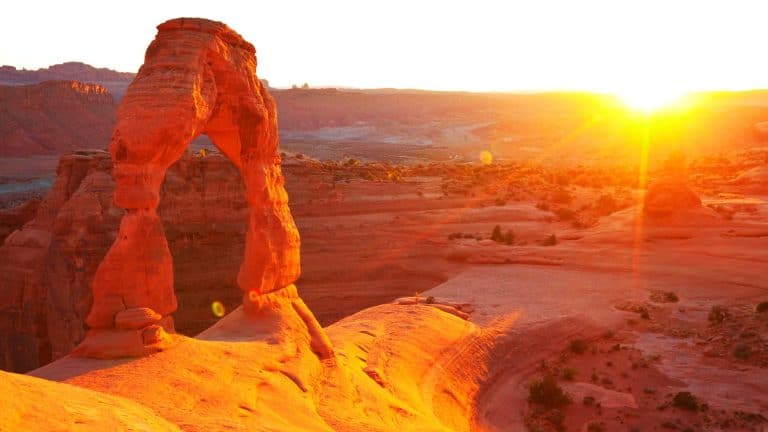Discover Parks & Wildlife contains affiliate links and is a member of the Amazon Services LLC Associates Program. If you make a purchase using one of the Amazon links, we may receive compensation at no extra cost to you. We may also use select AI tools to support our creative process, but all content is reviewed, refined, and finalized by our human team. See our disclosure policy and our AI use policy for more information.
13 Colorado NPS Sites That’ll Make You Wonder Why You Ever Left The State
Colorado may be famous for its snow-capped peaks and ski towns, but tucked between those dramatic horizons are some of the most varied and thought-provoking National Park Service sites in the country. These places don’t just show off scenery; they tell stories.
From high mountain passes to wide desert canyons, and from ancient cliff dwellings to solemn memorials, each site adds another layer to Colorado’s identity. You’ll stand where dinosaurs once roamed, where traders once swapped goods under adobe arches, and where shifting sands still sculpt new shapes overnight. It’s a state that proves history and nature can share the same map.
Pack for unpredictable weather (sunburn and frostbite have been known to attend the same picnic), keep your sense of wonder handy, and maybe bring an extra memory card. Because these sites deserve more than a quick glance, they deserve a full conversation, preferably one that comes with a hot coffee.
Hovenweep National Monument

Hovenweep feels like a secret whispered across the desert. Straddling the Colorado‑Utah border, this monument protects six clusters of ancient stone towers and dwellings built by the Ancestral Puebloans around 1200 AD. The structures rise dramatically from the canyon rims, often in places that make you question the builders’ fear of heights.
The Square Tower Group near the visitor center is the most accessible, with a two‑mile loop trail that passes by remarkably preserved walls and overlooks. What’s striking here isn’t size but solitude. You can stand alone among the ruins, hearing nothing but wind and the occasional raven.
The night skies are astonishingly dark, drawing stargazers who prefer constellations to city lights. Just remember to bring water; this is the high desert after all. And maybe some sturdy shoes for rocky paths.
Mesa Verde National Park

Mesa Verde is Colorado’s archaeological crown jewel. Home to over 600 cliff dwellings built by the Ancestral Puebloans, this park offers an intimate look at life from nearly a thousand years ago.
The most famous site, Cliff Palace, nestles under a sandstone overhang like a hidden city frozen in time. Guided tours take you down ladders and through narrow passages, where you can stand inside rooms once used for ceremonies, cooking, and shelter.
Beyond the dwellings, the park’s mesa‑top roads wind through juniper forests and past panoramic overlooks that stretch across the Four Corners region. Wildlife sightings (mule deer, foxes, wild turkeys) add to the sense that life still pulses through this ancient place.
Summer days can be hot, but evenings cool fast, making late‑day visits ideal.
Yucca House National Monument

Hidden just southwest of Cortez, Yucca House is one of Colorado’s quietest treasures. There are no paved roads, no visitor center, and no big signs pointing the way. Instead, you’ll get just a dirt track leading to ancient ruins that time has kindly left mostly untouched.
The site preserves an unexcavated Ancestral Puebloan village estimated to have been occupied from about 1100 to 1300 AD. Low stone walls outline what were once kivas, homes, and courtyards. You can wander freely among them, feeling that rare blend of solitude and discovery.
Because it’s undeveloped, Yucca House feels more authentic than many larger sites. And the bonus is you get to experience the past without filters or crowds. It’s not flashy, but that’s exactly what makes it special. Visiting here feels like catching Colorado’s history mid‑sentence, and realizing you’re lucky just to hear the echo.
Bent’s Old Fort National Historic Site
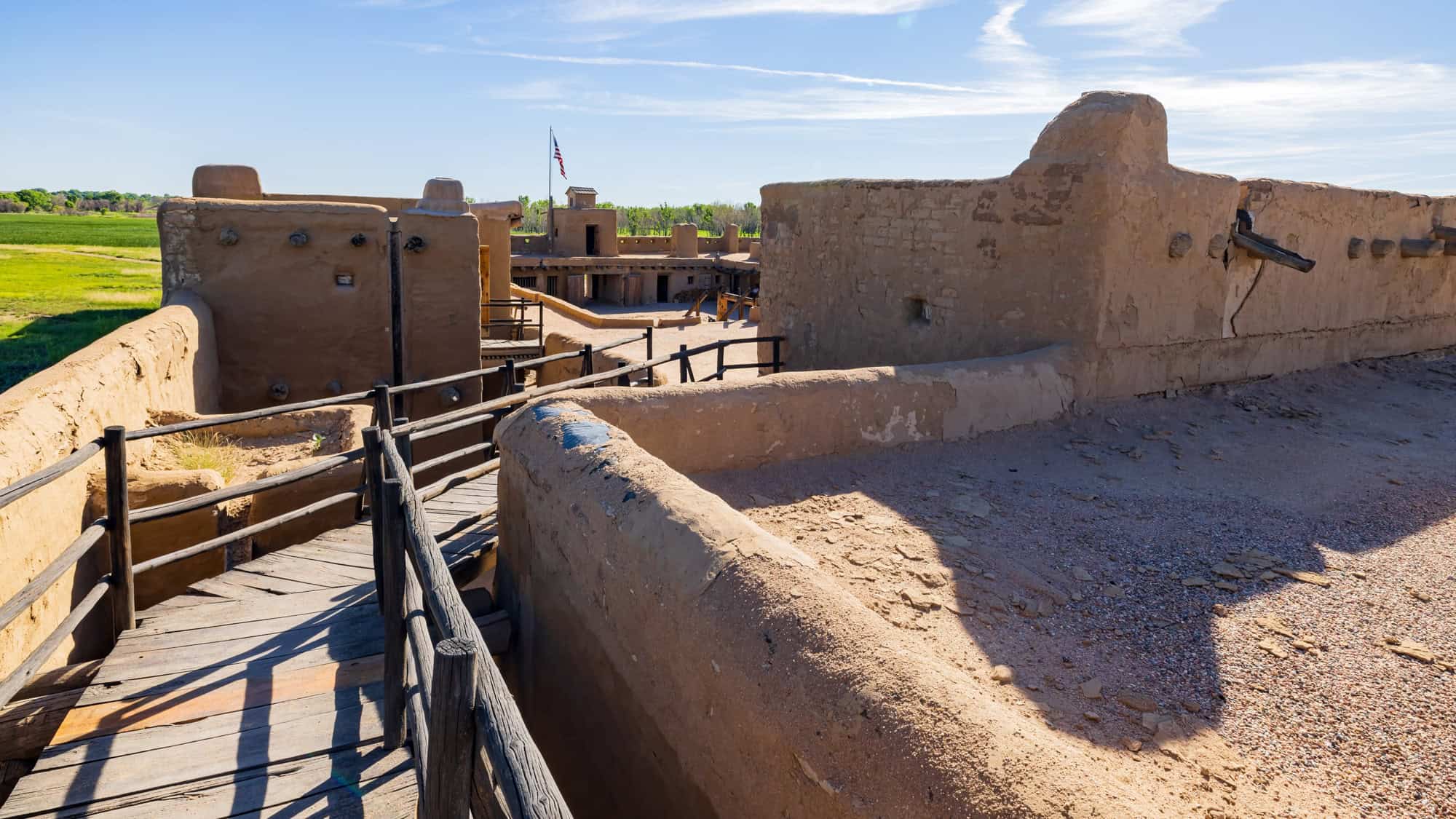
If you ever wanted to know what frontier hustle looked like before highways and convenience stores, Bent’s Old Fort near La Junta delivers. Reconstructed with painstaking accuracy, this adobe trading post was once a bustling stop on the Santa Fe Trail in the 1830s and 1840s. Traders, trappers, and travelers from all backgrounds converged here to barter for furs, tools, and stories… which, let’s be honest, were probably exaggerated even back then.
Today, the fort’s thick adobe walls and wooden gates make you feel like you’ve stepped onto a movie set. Except the smell of leather, hay, and wood smoke is real. You can wander through the living quarters and climb to the watchtower.
You can even chat with costumed interpreters who somehow keep smiling in full 19th‑century wool. Summer temperatures can hit the 90s°F, so bring water and sunscreen unless you want to reenact heat exhaustion. While this may not be a famous site, it is the perfect place to see how trade built connections across cultures long before the idea of “Colorado” existed.
Amache National Historic Site

In the quiet fields near Granada lies one of Colorado’s most hauntingly important places. Amache National Historic Site marks the grounds of a World War II incarceration camp where over 7,000 Japanese Americans were held between 1942 and 1945.
It’s not a grand or flashy destination, and that’s exactly the point. The silence here carries the stories. You can walk the gravel roads where barracks once stood, trace the faint outlines of community gardens, and read the interpretive signs that reveal what daily life looked like under the guarded watchtowers. There’s a small museum in town that adds context, with artifacts donated by former residents and their families.
The drive to Amache feels remote; it’s three hours from Colorado Springs. But that distance somehow deepens its impact. There’s no admission fee, no crowds, just the Colorado wind and the echoes of resilience. Visiting here isn’t about entertainment; it’s about remembrance.
Black Canyon of the Gunnison National Park

Standing at the rim of Black Canyon feels like peering into a crack in the Earth that forgot to stop forming. The Gunnison River carved this chasm over millions of years, slicing through ancient rock to create cliffs so steep the sun barely reaches the bottom. Some sections are only 40 feet wide at the river, making the name “Black” pretty self‑explanatory.
If you drive the South Rim Road near Montrose, you’ll find overlook after overlook that demands you pull over “just for one more picture.” For the brave (and fit), the park allows inner‑canyon hiking, but don’t underestimate it. The descent is steep, the climb out steeper, and the rangers will tell you exactly how serious they are when they say “unmarked routes.”
But even from the top, the views are humbling. Eagles circle, the wind whistles through the canyon walls, and you realize that nature’s idea of art usually doesn’t include safety railings.
Colorado National Monument
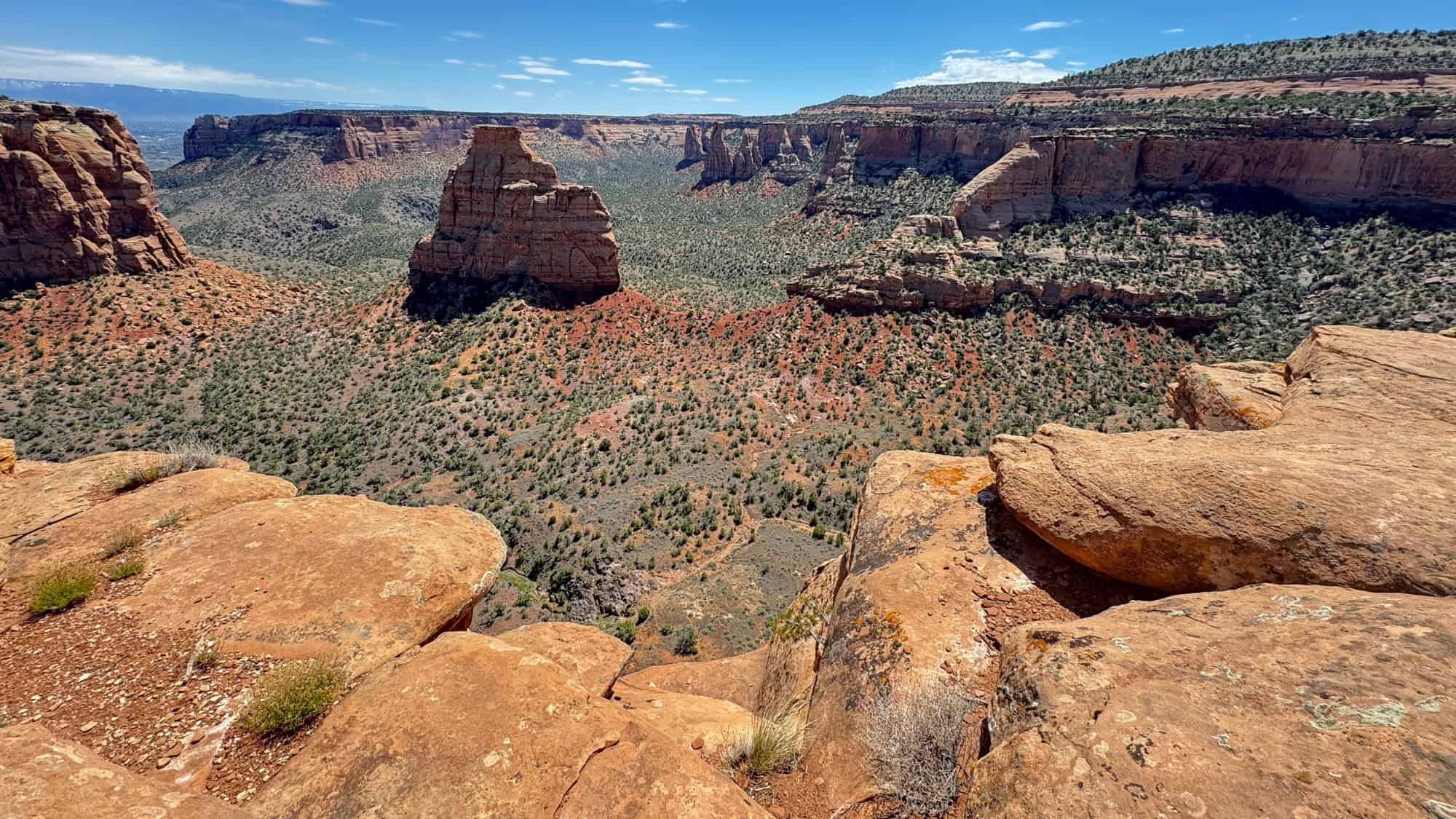
Red rocks, towering monoliths, and hairpin turns, Colorado National Monument near Grand Junction is where geology shows off. The 23‑mile Rim Rock Drive winds past sandstone cliffs and deep canyons that catch the light in fifty shades of orange every evening.
You’ll spot bighorn sheep balanced on ridges that seem physically impossible and watch golden eagles trace loops in the updrafts. The monument’s trails range from quick overlooks to half‑day hikes that’ll have your calves plotting revenge.
For a true postcard view, stop at Independence Monument Viewpoint, where a 450‑foot spire stands against the horizon like a sandstone skyscraper. There’s something grounding about how still it feels here, like the desert’s version of meditation… minus the chanting.
It’s easy to overlook this park next to Colorado’s bigger names, but if you skip it, you’ll miss a masterpiece carved by patience and wind.
Rocky Mountain National Park

It’s impossible to talk about Colorado’s natural beauty without mentioning Rocky Mountain National Park. Stretching across 415 square miles of alpine splendor, this park packs more scenery into a single drive than most states manage in total.
Trail Ridge Road climbs above 12,000 feet, giving you that “top of the world” feeling where even the clouds seem to take a coffee break. Hiking trails lead to mirror‑still lakes, cascading waterfalls, and meadows dotted with elk and marmots who look permanently unimpressed by the view.
Each season brings its own personality: wildflowers in summer, fiery aspens in fall, and snow‑draped silence in winter. The air feels thinner, crisper, and more honest somehow. Be ready for crowds in peak months, but don’t let that deter you; there’s plenty of mountain to go around.
Curecanti National Recreation Area

In western Colorado, the landscape softens into deep blue reservoirs framed by rugged cliffs and sagebrush plains. That’s Curecanti National Recreation Area, a string of three reservoirs created along the Gunnison River: Blue Mesa, Morrow Point, and Crystal.
Each one offers its own flavor of adventure. Blue Mesa is the largest lake in Colorado, perfect for boating, kayaking, or chasing trophy lake trout. Morrow Point is narrower and wilder, best known for its steep canyon walls and a challenging stairway descent via the Pine Creek Trail, where paddlers can launch for a quiet trip through the gorge. There’s no longer a ranger-led boat tour since the 2020 shutdown, but the solitude more than makes up for it (and it might still come back one day).
Birdwatchers love this area too, with osprey and eagles often perched above the water. It’s less crowded than other Colorado parks, which means sunsets feel private and mornings come with nothing but the sound of wind and water. Bring your fishing pole and your camera.
Sand Creek Massacre National Historic Site

Traveling to Sand Creek is a sobering experience, but an essential one. Located in southeastern Colorado near Eads, this site preserves the landscape where, in 1864, more than 200 Cheyenne and Arapaho people were killed by U.S. soldiers.
The National Park Service maintains the land as a place of remembrance and healing, so walking the trails here is quiet work. You move through tall grasses and open prairie, guided by interpretive signs that share survivor accounts and tribal histories. The site’s overlook offers a panoramic view of the creek bed below, and the silence feels deliberate, as if the land itself insists on respect.
Ceremonies and educational programs are held periodically, inviting visitors to learn rather than look away. There’s no gift shop fanfare, just truth, grief, and resolve.
Visiting Sand Creek reminds you that national parks don’t just protect beauty; they protect memory, even when it hurts.
Florissant Fossil Beds National Monument
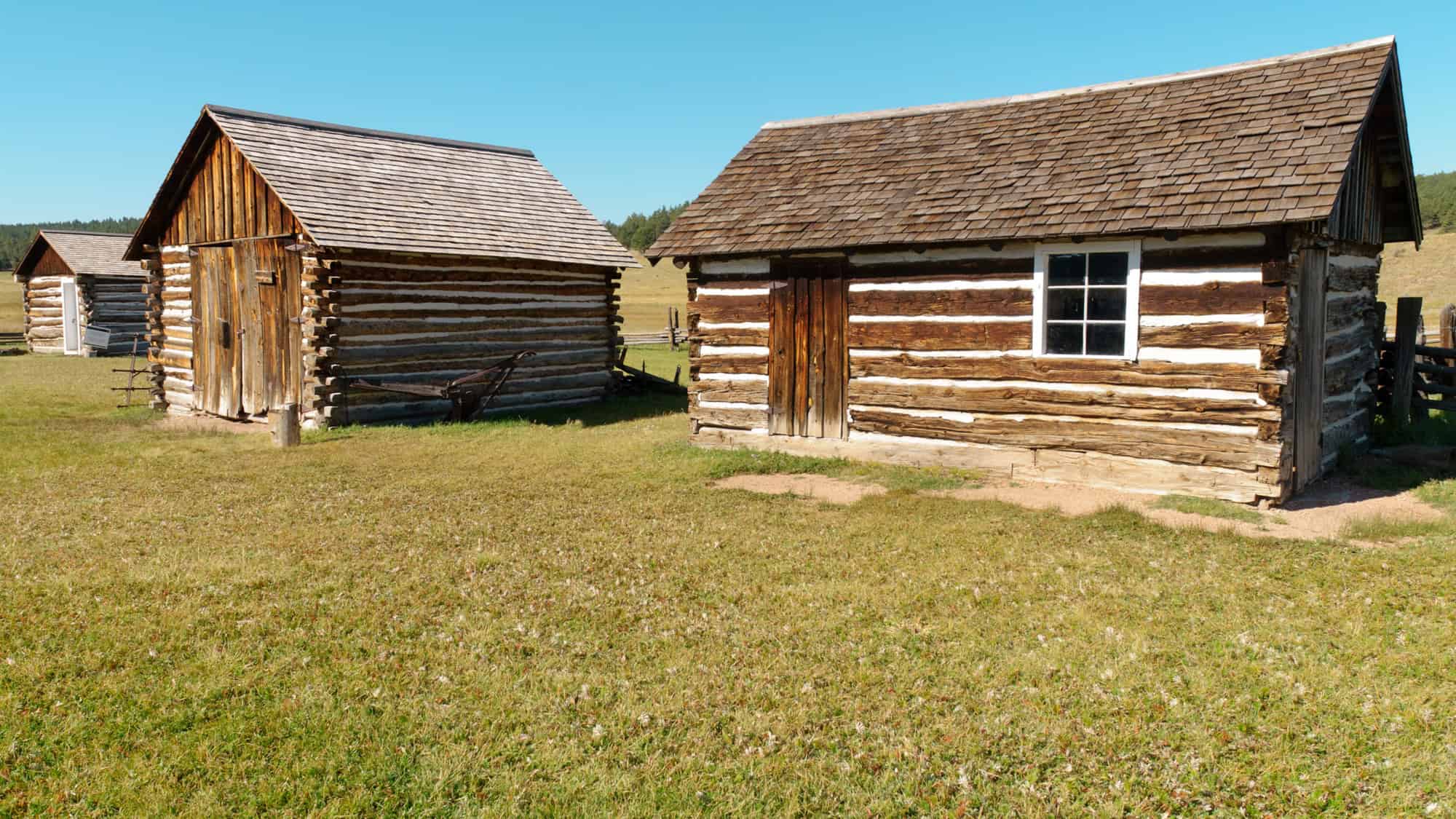
Tucked in the shadow of Pikes Peak, Florissant Fossil Beds is where ancient history hides in plain sight. Here, 34‑million‑year‑old lakebed fossils reveal the story of a once‑lush landscape filled with redwoods, insects, and even tiny wasps (yes, they’ve been around that long).
The site’s most striking features are the petrified tree stumps (some up to 14 feet wide), standing like the ghosts of a prehistoric forest. Trails wind through meadows and pine woods, and the visitor center’s exhibits explain how volcanic ash preserved this time capsule of life.
What makes Florissant so special is how ordinary it feels; you can picnic beside a meadow knowing you’re sitting on one of the richest fossil deposits in the world. It’s a peaceful, almost meditative place, especially in early morning light. And unlike some fossil sites, you won’t be elbow‑to‑elbow with crowds.
Dinosaur National Monument
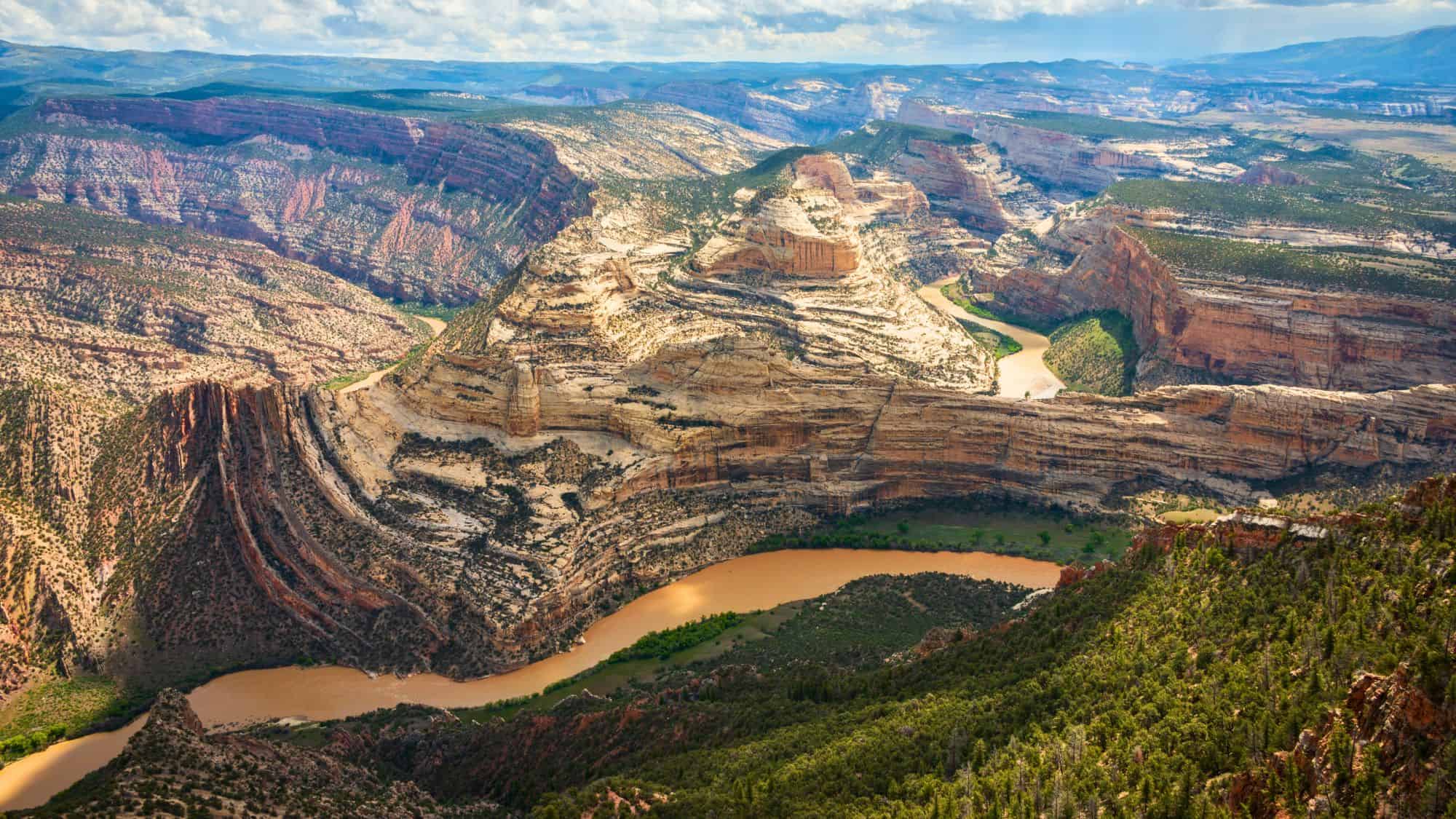
For anyone who still secretly roots for the dinosaurs in movies, this park feels like vindication (especially if your heart broke at the end of Jurassic Park: Fallen Kingdom, like mine did). Straddling the Colorado‑Utah border, Dinosaur National Monument preserves one of the richest fossil beds in North America.
You can actually see hundreds of bones still embedded in rock at the Quarry Exhibit Hall. It’s a rare moment where science and spectacle perfectly align. But the fossils are just part of the story.
The monument also boasts sweeping canyons carved by the Green and Yampa Rivers, with petroglyphs etched into cliff faces by ancient peoples thousands of years ago. Drive the Harpers Corner Road for panoramic views, or, if you’re up for it, try a rafting trip through the canyons for an up‑close perspective that beats any museum display.
Whether you’re six or sixty, you’ll leave with a new respect for the drama of deep time… and maybe a mild obsession with trilobites.
Great Sand Dunes National Park & Preserve

If Colorado had a sense of humor, it would be this park. In the middle of alpine country sits a vast desert of sand dunes rising up to 750 feet tall, the highest in North America. Great Sand Dunes National Park sprawls across the San Luis Valley, bordered by snow‑capped peaks that make the whole scene feel like a trick of perspective.
Hiking to the top of Star Dune is a workout disguised as a nature walk, but the views from the summit make every sweaty step worth it. Families bring sleds to slide down the slopes (yes, you can actually sled on sand), and Medano Creek turns into a shallow beach each spring when snowmelt flows through the valley.
The contrast of desert heat and alpine breeze is surreal, and you’ll probably find sand in your shoes for weeks. Visit at sunset when the dunes glow gold and the shadows stretch long. Or stay after dark to see some of the clearest skies and the Milky Way.
Like Our Content? Follow Us on MSN (or click the Follow Button above) for more from Discover Parks & Wildlife.
7 East Coast National Parks That Deserve a Spot on Your Bucket List
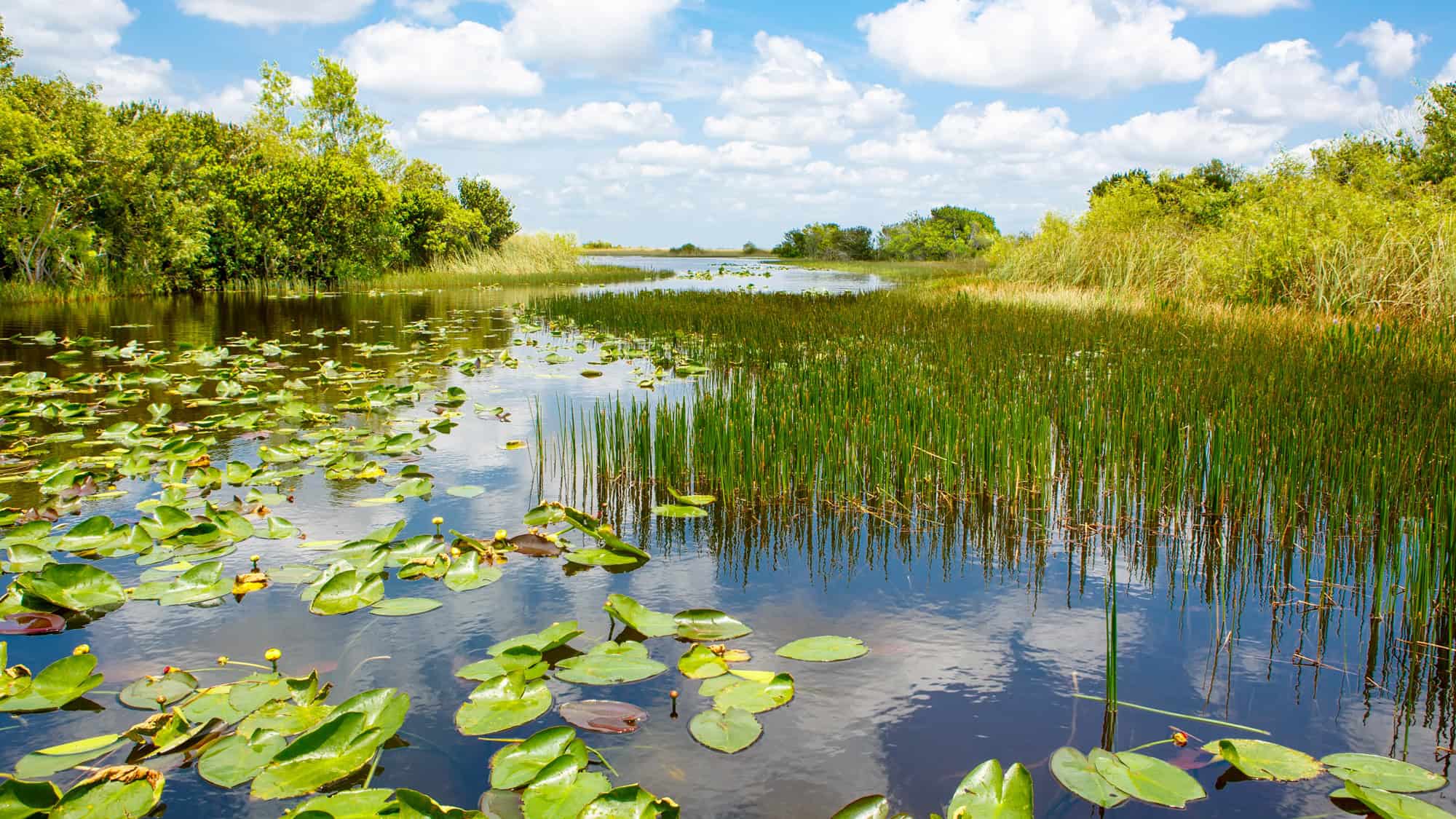
If you thought your bucket list was already overflowing like a bad buffet, prepare to make room for these East Coast national parks.
7 Oldest U.S. National Parks That Still Reign Supreme

Oh sure, because who doesn’t want to read about those ancient U.S. national parks that have been hanging around longer than your great aunt’s fruitcake?
11 Jaw-Dropping U.S. National Parks for Wildlife Enthusiasts

If you thought binge-watching nature documentaries was the ultimate way to appreciate wildlife, wait until you check out this eye-popping compilation of U.S. national parks. It will have you packing your binoculars and possibly considering a career in animal whispering.


